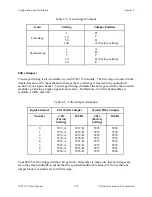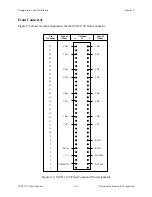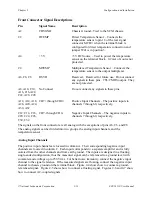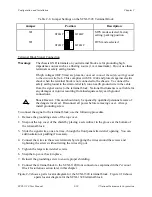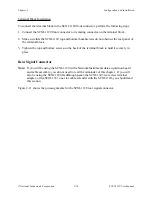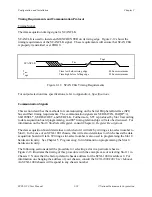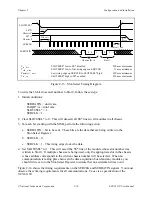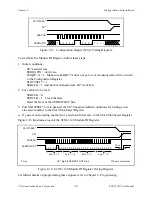
Configuration and Installation
Chapter 2
SCXI-1120 User Manual
2-18
© National Instruments Corporation
The following warnings contain important safety information concerning hazardous voltages and
terminal blocks.
Warnings:
When using the terminal block with high common-mode voltages, you must
insulate your signal wires appropriately. National Instruments is not liable for any
damages or injuries resulting from inadequate signal wire insulation.
If high voltages (
≥
42 Vrms) are present, you must connect the safety earth ground
to the strain-relief tab. This complies with UL 1244 and protects against electric
shock when the terminal block is not connected to the chassis. To connect the
safety earth ground to the strain-relief tab, run an earth ground wire in the cable
from the signal source to the terminal block. National Instruments is not liable for
any damages or injuries resulting from inadequate safety earth ground
connections.
When connecting your signals to the SCXI-1320 terminal block for use with the SCXI-1120,
follow the labeling on the SCXI-1320 indicated under the module type column for the
SCXI-1120 as indicated in Figure 2-9.
When connecting your signals to the SCXI-1328 high-accuracy isothermal terminal block for use
with the SCXI-1120, follow the labeling on the SCXI-1328 indicated along the module type row
for the SCXI-1120 as indicated in Figure 2-10.
Terminal Block Temperature Sensor
To accommodate thermocouples with the SCXI-1120, the terminal block has a temperature
sensor for cold-junction compensation. You can connect the temperature sensor in two ways:
•
You can connect the temperature sensor to the MTEMP pin (C4) on the module front
connector and multiplex the sensor at the output multiplexer along with amplifier outputs.
This is the Multiplexed Temperature Sensor (MTS) mode. Refer to the Configuration
Register section in Chapter 4, Register Descriptions, for further details.
•
You can connect the temperature sensor to a separate data acquisition channel via pin 18 on
the module rear signal connector when you set SCXI-1120 jumper W41 to position 3. This is
the Direct Temperature Sensor (DTS) mode.
Note:
Use an average of a large number of samples to obtain the most accurate reading.
Noisy environments require more samples for greater accuracy.
The SCXI-1320 temperature sensor outputs 10 mV/
°
C and has an accuracy of
±
1
°
C over the
0
°
to 55
°
C temperature range. To determine the temperature, use the following formulas:
T (
°
C) = 100(V
TEMPOUT
)
T (
°
F)
=
T (
°
C)
[
]
9
5
+
32
where V
TEMPOUT
is the temperature sensor output and T (
°
F) and T (
°
C) are the temperature
readings in degrees Fahrenheit and degrees Celsius, respectively.
The SCXI-1328 temperature sensor outputs 0.62 to 0.07 V from 0
°
to 55
°
C and has an accuracy
of
±
0.35
°
C over the 15
°
to 35
°
C range and
±
0.65
°
C over the 0
°
to 15
°
and 35
°
to 55
°
C ranges.







